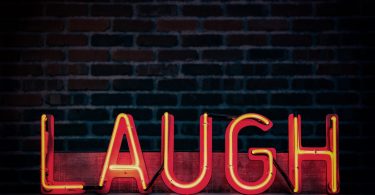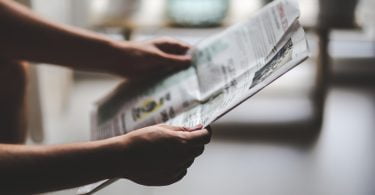It was a week dominated by the news out of Westminster, with the marking of the half-way point of the coalition government of Prime Minister David Cameron and Deputy Prime Minister Nick Clegg.
It was a week dominated by the news out of Westminster, with the marking of the half-way point of the coalition government of Prime Minister David Cameron and Deputy Prime Minister Nick Clegg. In the halls of the Commons January 7, there was a debate about the policies that came and what was to come for the future.
Yet, the half-way point of the coalition government had something more to tell outside of the debates surrounding the politics of the policies. It came seconds after the press conference, where it had emerged that there were no female journalists who asked Cameron and Clegg questions. Twitter was abuzz with the conversation about this after the conference, with Number 10 saying in a tweet from the BBC’s Norman Smith that the lack of questions came as a result of the absence of female TV and newspaper political editors.
A spokesperson for Number 10 declined to comment on the record for this piece.
It led to this question by many, including Cathy Newman, presenter of Channel 4 News (and former political correspondent at the Financial Times and Channel 4): Where have all the women in the lobby gone? Why weren’t there any there at that conference?
Writing in the Daily Telegraph, Newman said Cameron could not be blamed for the favoritism of men. “Although there were never many of us, the media village in Westminster wasn’t quite the gentleman’s club it now seems to have become,” Newman said, noting Gaby Hinsliff’s work at the Observer and Kirsty Walker’s work at the Daily Mail, both of whom left to spend more time with their families.
Newman says though that wasn’t the reason why she left. “I must admit, work-life balance wasn’t the reason I left,” Newman said. “I got offered a presenting role at Channel 4 News and while it was a wrench leaving Westminster, I still get to interview plenty of politicians.”
Research in the Guardian published January 9 indicated that 23.1 percent of the lobby journalists for national newspapers are female with no female political editors, with the Independent and the Daily Mirror having all male political reporting teams. Yet, on the Sunday papers, three of the political editors are female—Jane Merrick of the Independent on Sunday, Isabel Oakeshott of the Sunday Times and Kirsty Buchanan of the Sunday Express.
Newman also asked if broadcasters were better to ensure female journalists were asking questions of politicians, noting the work of Allegra Stratton (formerly of The Guardian) as Newsnight’s current political editor, and Elinor Goodman, who for 25 years served as political editor at Channel 4 News. Newman also notes a woman may need to fight to ensure her voice in a newsroom is heard, which had been the case during her time at the Financial Times. “Not long after I’d joined the paper, when I was media correspondent, I found out that a man had been hired to the Companies desk, traditionally a modestly-paid training ground, yet he was being paid £10,000 more than me,” Newman said. “I confronted a senior executive about why this was, only to be told: ‘You don’t have a mortgage or a family, what do you need the money for?’” (She later got the pay rise.)
So why overall are there less women in the lobby? Helen Lewis, deputy editor of the New Statesman, says women are underrepresented overall in hard news journalism. “It is difficult to find women to write about Westminster politics,” Lewis said. “There is also the feeling that the lobby is dominated by men and young women can be put off by it. It is a huge problem.”
Lewis adds that the questioning of politicians is the most important journalism out there, and that they should be more representative (especially in the case of certain policies). Lewis adds that while reforms were made so carers and mothers could be MPs, that has not happened for journalism yet. “It is a job that demands hard hours,” Lewis said. “It discourages some.”
Pippa Crerar, political correspondent with the London Evening Standard and a lobby journalist, says the blame for the lack of female journalists should not go onto the Prime Minister. “There are very few female political editors,” Crerar said. “They are exclusively on the Sunday papers.”
Crerar added that the culture of women in political journalism has changed. “I was struck when I first arrived that my generation was not quite equally balanced, but men and women of my generation were in similar positions,” Crerar said. “There were more men, but the minority of women was strong and it felt much more equal.” Crerar added that there was double the current number of female political editors when she came to Westminster compared to now.
In the end, Lewis adds, the revolution in the culture of women in journalism will happen, but the change may come in conjunction with how journalism is being consumed. “Journalism is changing, and I don’t know what form it will be in in 20 years,” Lewis said. “The role of women in journalism may change with the consumption of journalism. There are brilliant women doing this, but political journalism would be more interesting if more diverse voices were included.”
Crerar added that if students wanted to get into the profession, stick with it. “I believe that people can do it even if they can put their mind to it,” Crerar said. “You have to persevere. If you’re persistent, it’ll happen. Don’t be put off by the preconceptions of journalism as a discipline. If you want to do it, get into it.”
What do you think? What can be done to increase the number of female political journalists? Have your say in the comments section below, on Facebook or on Twitter.
Image courtesy of Flickr user englishpen.
This piece is part of a series on the future of women in British journalism.
This article was amended on 22 January to reflect a couple of errors in quotes.








